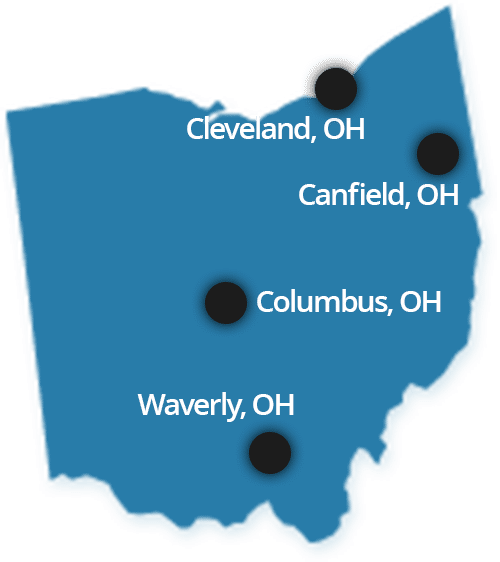Treating infectious diseases always involves some degree of risk for healthcare workers. But the challenges doctors, nurses, and other medical professionals and staff have faced during the Covid-19 pandemic reach far beyond those standard risks. From the beginning, healthcare workers were operating with too little information, learning about the virus, how to recognize it, and how it was transmitted in real time. To make matters worse, healthcare workers in many areas lacked adequate protective gear (commonly referred to as “PPE” for “personal protective equipment”).
Working with incomplete information, shifting protocols, and too few masks, gowns, and gloves to observe best practices, medical workers faced risks and exposures no one signed on for. Now, several months into the pandemic, two reports are revealing the high price healthcare workers – especially nurses — are paying.
Healthcare Workers and Coronavirus
In late October, the Centers for Disease Control and Prevention (CDC) released an analysis of data gathered through COVID-NET. The information was collected from 98 counties across 13 states, including Ohio. In a sample of thousands of adult Covid-19 patients admitted to several different hospitals, researchers found that about 6% were healthcare workers. Hospitalized healthcare workers included, among others:
- Nurses;
- CNAs, nurse’s aides and nursing assistants;
- Patient aides and care aides;
- Phlebotomists and technicians;
- Housekeeping and maintenance workers;
- Nursing home and assisted living facility workers;
- Home health workers;
- Social workers and counselors;
- Physicians;
- EMS team members and paramedics.
However, nurses and nursing assistants were hit hardest. “Nursing related occupations” accounted for 36.5% of Covid-related hospitalizations among healthcare workers. Though researchers didn’t track actual direct exposures, this heavy concentration among nurses, nurse’s aides, nursing assistants, and CNAs is likely due to heavier patient contact in those roles.
Among hospitalized healthcare workers:
- 27.5% were admitted to intensive care units (ICUs);
- 15.8% required invasive mechanical ventilation;
- 4.2% died.
The CDC analysis came on the heels of an in-depth report from National Nurses United (NNU). The report indicated that 213 registered nurses (RNs) and a total of 1,718 healthcare workers had died of Covid-19 and related complications as of September 16. These include at least five RNs and 30 healthcare workers in Ohio.
NNU acknowledges that these numbers are higher than those reported by other sources, but say they believe the estimates are conservative. They believe healthcare worker illness and death has been significantly underreported because healthcare worker status is not included in most Covid-19 reporting. Specifically, the report says that only 24% of nearly five million cases reported by early fall included information about whether the patient was a healthcare worker. And a significant percentage of records that did include healthcare worker designations did not say whether the patient had survived or died.
The organization says more than 258,000 healthcare workers in the United States had been infected with Covid-19 by mid-September, including more than 15,000 in Ohio. Those Ohio infections made up more than 11% of total cases statewide.
Working Conditions and Covid-19
NNU attributes at least some of the illness and death among healthcare workers to working conditions. The report references an earlier survey released by the same organization in July. Just 24% of nurses responding to that survey said they felt their employers were providing a safe workplace. 87% of nurses who worked in hospitals said they’d had to reuse at least one piece of PPE and just 23% said they’d been tested for Covid-19.
Who is Most at Risk?
While many healthcare workers face elevated risks during the pandemic, the impact has been different based on a variety of factors, including risk factors, race, and type of facility.
The CDC report broke down information about healthcare workers who were hospitalized due to Covid-19:
- The median age of hospitalized healthcare workers was 49;
- More than 70% were female;
- About 90% had at least one underlying condition;
- Obesity was the most common underlying condition;
- More than half were black.
Healthcare workers of color have also suffered a disproportionate number of Covid-19 deaths. The NNU report found that more than 58% of the RNs who had died were nurses of color, though just 24.1% of RNs nationwide are people of color. More specifically, 31.5% of RNs who died of Covid-19 and related complications were Filipino. Filipinos make up just 4% of registered nurses around the country. 17.8% were black, though just 12.4% of registered nurses are black.
Help for Ohio Healthcare Workers
Healthcare workers have been on the front lines, putting themselves at risk to save lives and provide help and comfort to people suffering from Covid-19 who are cut off from family and friends while hospitalized. Unfortunately, these dedicated professionals don’t always receive the same care and protection they offer to others. And even when adequate PPE is available and all precautions are taken, healthcare workers are often still at a greater risk than the general population.
At Plevin & Gallucci, we recognize the difficulties healthcare workers are facing and want to ensure that you have the support you need if you contract Covid-19 on the job.
You can schedule your free consultation right now by calling 877-4PLEVIN or filling out the contact form on this page.

